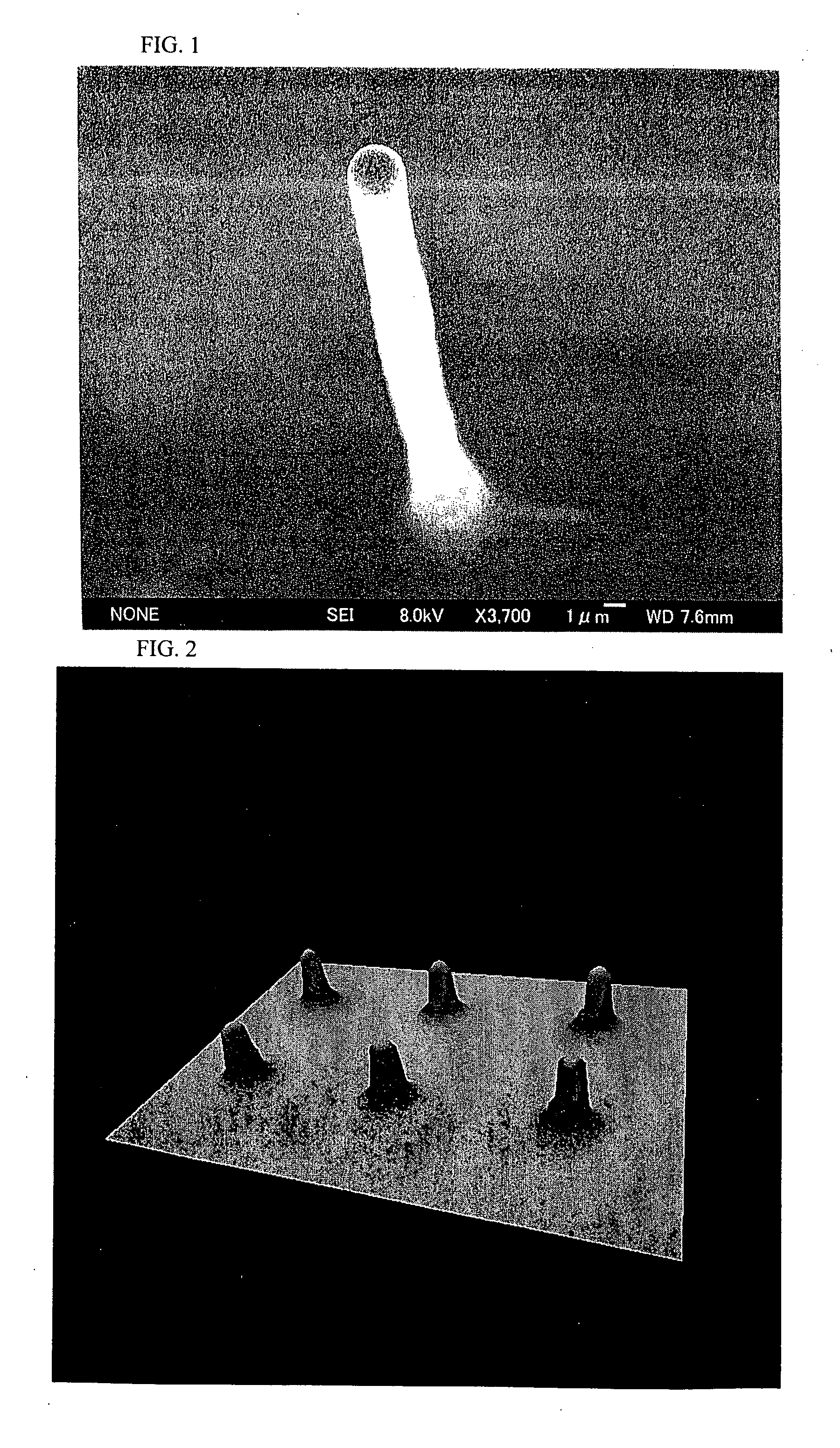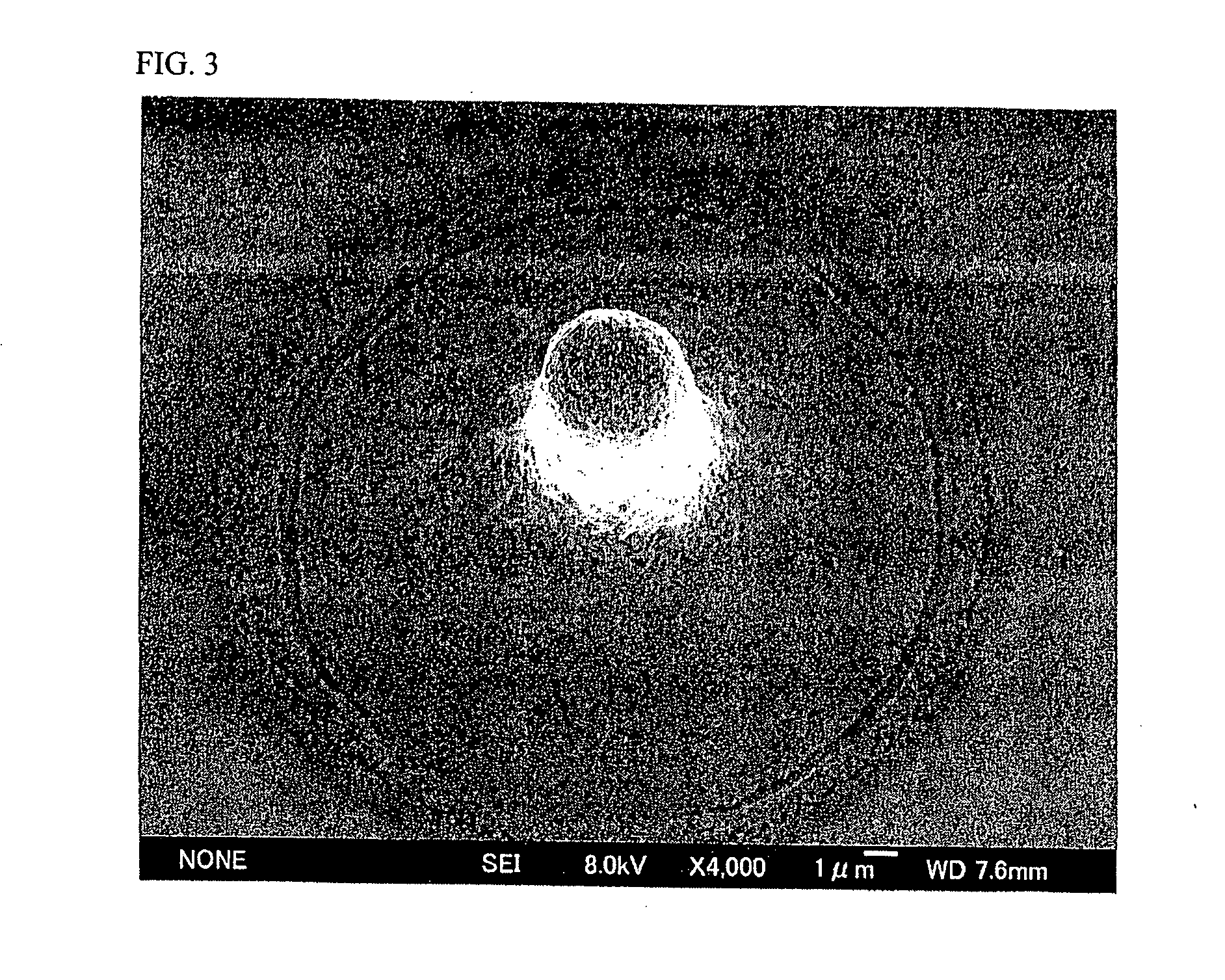Metal nanoparticle dispersion usable for ejection in the form of fine droplets to be applied in the layered shape
a metal nanoparticle and droplet technology, applied in the direction of electrically conductive paints, conductive pattern formation, other chemical processes, etc., can solve the problems of high thickness/width ratio, difficult to form a conductive metal paste coating, incident of voids, etc., to achieve high shape controllability, low impedance, and large film thickness
- Summary
- Abstract
- Description
- Claims
- Application Information
AI Technical Summary
Benefits of technology
Problems solved by technology
Method used
Image
Examples
reference examples 1 to 3
[0153]
TABLE 7Fluid viscosity and content of dispersion solvent in preparedviscous paste dispersion (nanoparticle paste)Ref. Ex. 1Ref. Ex. 2Ref. Ex. 3referred base for amount ofEx. 3Ex. 5Ex. 7components other thandispersion solventcontent of dispersion solvent424543(% by volume)fluid viscosity (23° C.)705040
[0154] The amount added of the components other than the dispersion solvent of the above-described silver nanoparticle dispersion of Example 3, the silver nanoparticle dispersion of Example 5 and the gold nanoparticle dispersion of Example 7 was the same and the amount of the dispersion solvent was reduced to ½ to prepare a viscous, paste dispersions of Reference Examples 1 to 3.
[0155] The content of the dispersion solvent in the prepared viscous paste dispersions of Reference Examples 1 to 3 was calculated and the fluid viscosity of the paste dispersions was measured by a spiral viscometer (measurement temperature 23° C.). Table 7 shows the content of the dispersion solvent in t...
example 8
[0156] Using the silver nanoparticle dispersion prepared in Example 1, a disc-like pattern whose base is 4.5 ?m in diameter is formed on glass by an ultrafine-droplet fluid ejecting apparatus (ultrafine inkjet apparatus). The drawing condition was the same as that of Example 1. The coated film thickness per application was 0.3 μm and the dispersion was repeatedly coated to the same pattern several times to prepare a disc-like silver nanoparticle coating layer having a layered thickness of 3.5 μm. After the drawing, the disc-like silver nanoparticle layer on the glass was subjected to heat treatment at 240?C for 1 hour to sinter the silver nanoparticle layer, whereby a silver nanoparticle sintered product layer was formed. Regarding the outer shape of the obtained sintered product layer, the layer is a disc-like (conical socle) sintered metal pad having a circular base 4.5 μm in diameter and a thickness of 2.5 μm. FIG. 3 is a print out of an image of an outer shape of a sintered meta...
example 9
[0157] Through holes 200 μm in diameter extending between the upper layer surface and the back side (lower layer surface) were formed on a multilayer wiring substrate material. The upper layer of the multilayer wiring substrate on which through holes are made had a thickness of 1.6 mm. The diameter / depth ratio, i.e., the aspect ratio of the through hole is set to as high as 1 / 8. On the back side, a lower surface wiring layer is disposed, and the buried electroconductive member provided in the through hole constitutes via hole connection.
[0158] Using the silver nanoparticle dispersion prepared in Example 1, a buried type coating layer of silver nanoparticles is formed in a through hole 200 μm in diameter by an ultrafine-droplet fluid ejecting apparatus (ultrafine inkjet apparatus). The drawing condition was the same as that of Example 1. The coated film thickness per application was 0.3 μm and the dispersion was repeatedly coated to the through hole several times to prepare a silver...
PUM
| Property | Measurement | Unit |
|---|---|---|
| particle size | aaaaa | aaaaa |
| temperature | aaaaa | aaaaa |
| particle size | aaaaa | aaaaa |
Abstract
Description
Claims
Application Information
 Login to View More
Login to View More - R&D
- Intellectual Property
- Life Sciences
- Materials
- Tech Scout
- Unparalleled Data Quality
- Higher Quality Content
- 60% Fewer Hallucinations
Browse by: Latest US Patents, China's latest patents, Technical Efficacy Thesaurus, Application Domain, Technology Topic, Popular Technical Reports.
© 2025 PatSnap. All rights reserved.Legal|Privacy policy|Modern Slavery Act Transparency Statement|Sitemap|About US| Contact US: help@patsnap.com


